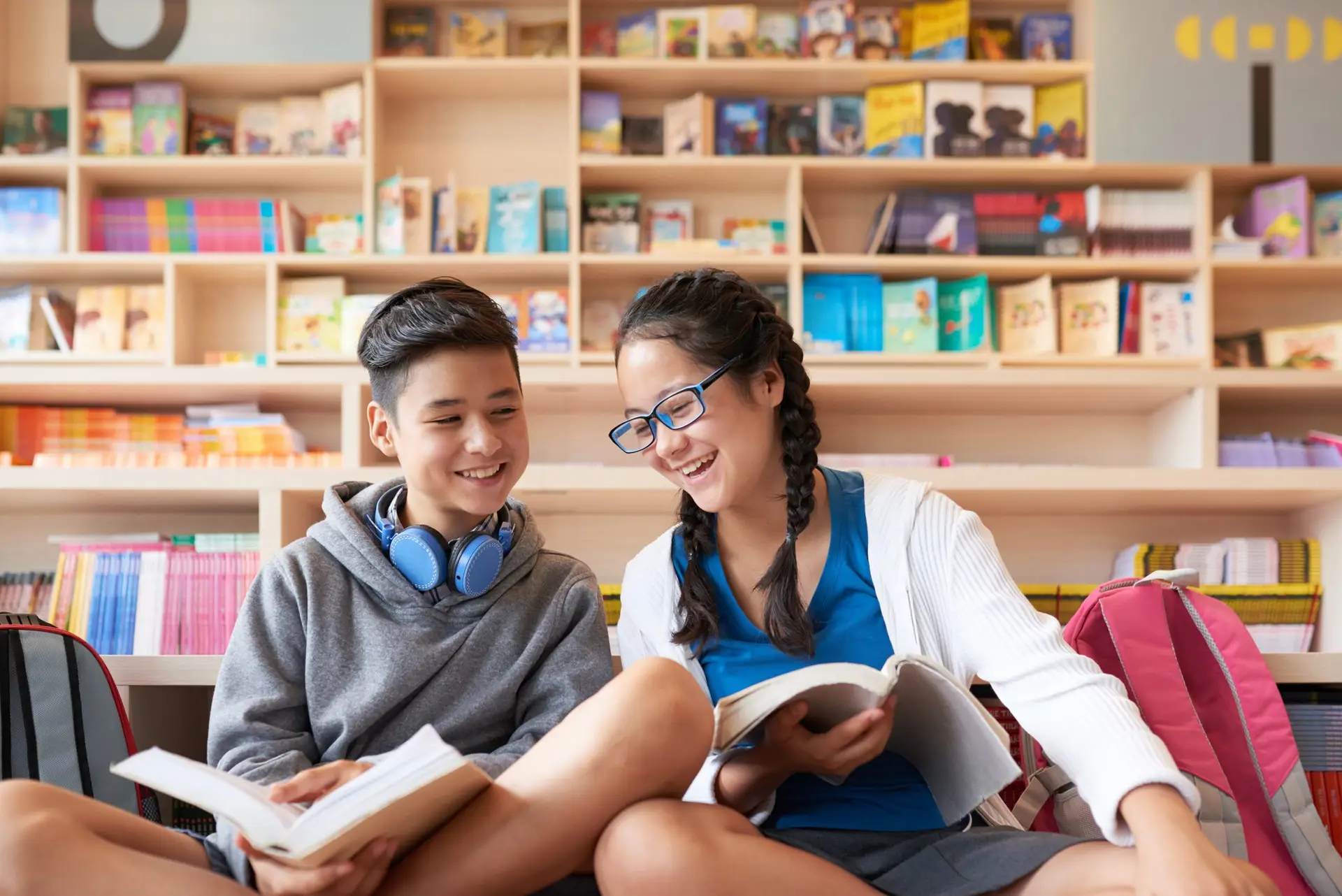When you were a kid, did your friends ever goad you into doing something you didn’t want to do? I know mine did. Way back in junior high, I let my friends convince me to text in class. I knew that texting during a lecture wasn’t the best phone etiquette, but I kept doing it anyway. I remember feeling like a superspy as I texted behind my copy of A Tale of Two Cities. My espionage didn’t last for long though. The teacher always found out and took my phone away.
I was influenced by peer pressure—and suffered the consequences.
Just like junior-high-school me, your kids and teens probably aren’t strangers to peer pressure. In fact, studies report that three in ten high school students feel immense pressure to fit in with their peer group. While it’s vital that teens have solid friends, nobody should have to change who they are to fit in.
It’s difficult to watch kids feel influenced to act a certain way. As parents and teachers, however, we can empower our kiddos to say no to negative influences by teaching them how to handle peer pressure. But before we delve into our little master class on avoiding peer pressure, let’s define it.
What Is Peer Pressure?
In a nutshell, peer pressure is when a friend or peer influences someone to do something they normally wouldn’t do. It can be both positive (like encouraging a friend to stop gossiping) or negative (say, convincing a friend to skip school or try drugs and alcohol).
Peer pressure happens to people of all ages, but older kids and teens are especially susceptible to it. When kids are younger, their self-esteem is based on parental influence. As they get older, however, kids start comparing themselves to others and looking for approval from friends and classmates. As such, older children may conform to peer pressure to appear “cooler” in their friends’ eyes and feel accepted by their group.
How to Handle Peer Pressure
Now that we have a handle on what peer pressure is, let’s look at six ways kids and teens can avoid succumbing to peer pressure.
Say No with Conviction and Confidence
The best (and most basic) way to avoid peer pressure is to shut down the situation before it even begins. Teach your children that it’s okay to say no.
It can be difficult for kids and teens to say no to friends. They may instead say something like, “I don’t know” or “Maybe next time.” While these phrases might fend off peer pressure for a moment, they don’t guarantee that it will stay away forever. A confident no tells your child’s friends that they have no interest in taking part in something that they know is wrong.
Have a Conversation
If saying no and stepping away from the situation doesn’t de-escalate peer pressure, it may be time for your child to have a conversation with the person pressuring them.
When I taught first grade, classroom conflicts were solved at the Peace Table. The Peace Table was a cushion-filled corner of the classroom where students could take turns expressing their feelings and solve the problem together. Teaching our students to solve conflict through conversation worked wonders because each person’s voice was heard and heeded. The same concept applies to kids feeling peer pressure!
Have a Secret Code to Communicate with Parents
Does your child have a cell phone? If they do, they can use it to remove themselves from an uncomfortable setting. Encourage your kids to call or send you a text when they start to feel negative peer pressure so that you can help them avoid the situation.
If your child is nervous that friends will see their texts, try creating a secret code that they can use to escape an awkward position. For example, if your child sends you a text saying something like, “Can we have dumplings for dinner?” it could mean, “I’m feeling negative peer pressure, please come get me.”
Smartphones from Troomi Wireless make it easy for you and your children to stay connected, ensuring that they can rely on you for help in sticky situations. Click here to learn more about why a Troomi phone is the best phone for your kiddo.
Seek Out Supportive Friends
Friends make a child’s life so much better. Having good friends teaches kids how to collaborate with others and explore their diverse interests. Having good friends also lowers the potential for cyberbullying. What good friends don’t do is put negative pressure on each other. If your child’s current group of pals continually pushes them into uncomfortable circumstances, it may be time for them to find some new friends.
Making friends can be difficult for kids and teens (and adults!). Encourage your child to step outside their comfort zone and eat lunch with kids they don’t normally talk to or set up a playdate with someone new from their class. If your child needs a little friendship coaching, try role playing with them! Role playing is a fun, imaginative way for kids to develop and practice new skills, and it’s an especially beneficial way to prepare for social situations.
Plan Ahead
Making friends isn’t the only time that kids should plan ahead. Developing a good game plan is beneficial in any social situation, and may even help your kids avoid peer pressure.
Before they go out with friends, encourage your kiddos to develop a plan of action so they know where they want to be and when they want to be there. Check bus times, make sure their phone is fully charged, and remind them that you’re only one text away if they need to get picked up. The spontaneity of peer pressure can’t compete with a sturdy schedule.
Teach Kids to Listen to Their Gut
Human instinct is an amazing thing. It tells us when we’re hungry or need to sleep, and our natural “fight or flight” instinct tells us when to leave a situation. Teach your kids to listen to their instinct in social settings. If they’re feeling pressured to do something that makes their conscious scream, “Don’t do this!” then they should probably pay attention.
Put a Stop to Peer Pressure
Peer pressure is often unavoidable, especially in a world where teens are constantly connected to each other through cell phones and social media. With these six methods in their tool kit, however, your kiddos have the skills needed to escape peer pressure as needed.


